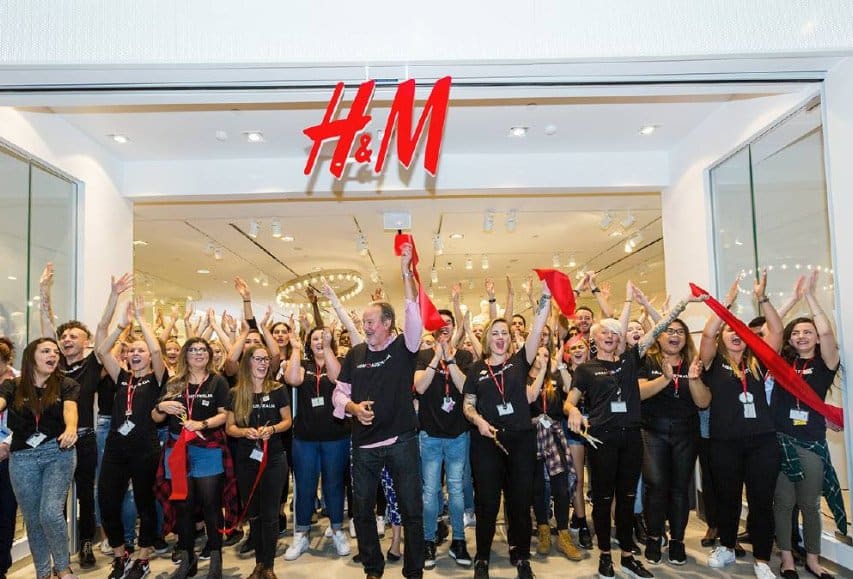Fashion’s Unsustainable Clothing Manufacturers

Last year it was reported H&M, the Swedish fast fashion retailer, had a big problem. The clothing brand had $4.3 billion (that’s billion with a B) in unsold inventory and the number was growing.
H&M manufactures hundreds of millions of garments every year. It ‘over-manufactures’ so many garments that the company actually creates energy in local Swedish incinerators by burning the unsold garments.
Clothing manufacturers like H&M, with insatiable appetites for growth, dominate fashion today. And each is over-manufacturing at epidemic levels – making more garments than the world’s population could ever need.
The cost to manufacture clothing has become so cheap in developing countries that there’s little risk for clothing manufacturers to overestimate purchase order quantities. It’s just a numbers game. And brands know they have a safety hatch; once the price goes low enough, someone somewhere will buy it, and probably not for less than they paid for it. Or they can burn it.
These corporations don’t think about natural resources, pollution or labor abuses when writing purchase orders. Above all, they see numbers. Are they wrong? This is how business has been done for decades.
The Unsustainable Way to Manufacture Clothing
The fashion industry uses inventory-based manufacturing. Fashion brands forecast what customers will buy, it’s rarely accurate and highly wasteful.
Department stores, big stores, small stores – they all need to be packed with inventory to look attractive and healthy to shoppers. Imagine all the stores, all over the world, all packed with inventory. Meanwhile, only a fraction of what’s in those stores is needed to serve a customer base or population. The rest is there to fill the store.
As mentioned, clothing is so cheap to make, brands don’t care about over-manufacturing. They know they can move the inventory through discounts and liquidation.
This cavalier culture of over-manufacturing has caused clothing production to double over the past 15 years. Subsequently, it’s created the popularity of outlet malls, the success of third-party liquidators like TJ Maxx and Marshalls, and the need for more Goodwill shops.
Inventory-based manufacturing, without regulation of supply and demand, is unsustainable. Every garment that is unnecessary manufactured has a negative consequence on the environment.
Clothing brands that use inventory-based manufacturing can take steps to be more sustainable by minimizing store size, focusing on selling products only within their core competency, and building quicker/reactionary supply chains.
The Sustainable Way to Manufacture Clothing
The most sustainable way to manufacture is also the most old-fashioned way; made-to-order.
Michael Burke, chairman and chief executive of Louis Vuitton said this in a 2019 article, “The ultimate destination of the luxury business is everything made-to-order. We’ll never achieve it, but that’s clearly where the market is headed.”
On-demand manufacturing (a.k.a. made-to-order) is the opposite of inventory-based manufacturing. On-demand only makes a product when a consumer requests it, there’s no guessing. It maximizes efficiency and minimizes waste.
If clothing manufacturers shifted even a portion of production to on-demand, volume could be greatly reduced. This means the use of natural resources and pollution would be a fraction of what it is.
Opponents of on-demand manufacturing would argue it’s a pipe dream. Similar arguments were made and are still being made about electric cars and renewable energy. On-demand manufacturing is certainly a long way off. But it should be considered, as the current model is unsustainable.
Some brands are already taking steps to slow waste. Brands are offering new items as ‘pre-order’ to gauge demand for products before committing to manufacturing. Other brands are looking to build faster supply-chains to react to replenish inventory more accurately and in smaller quantities.
Todd Shelton operates a pure on-demand manufacturing model in its East Rutherford, New Jersey factory.
If you have thoughts about this article or sustainable clothing manufacturing, we’d love to hear from you. Please reach out to us at [email protected].





